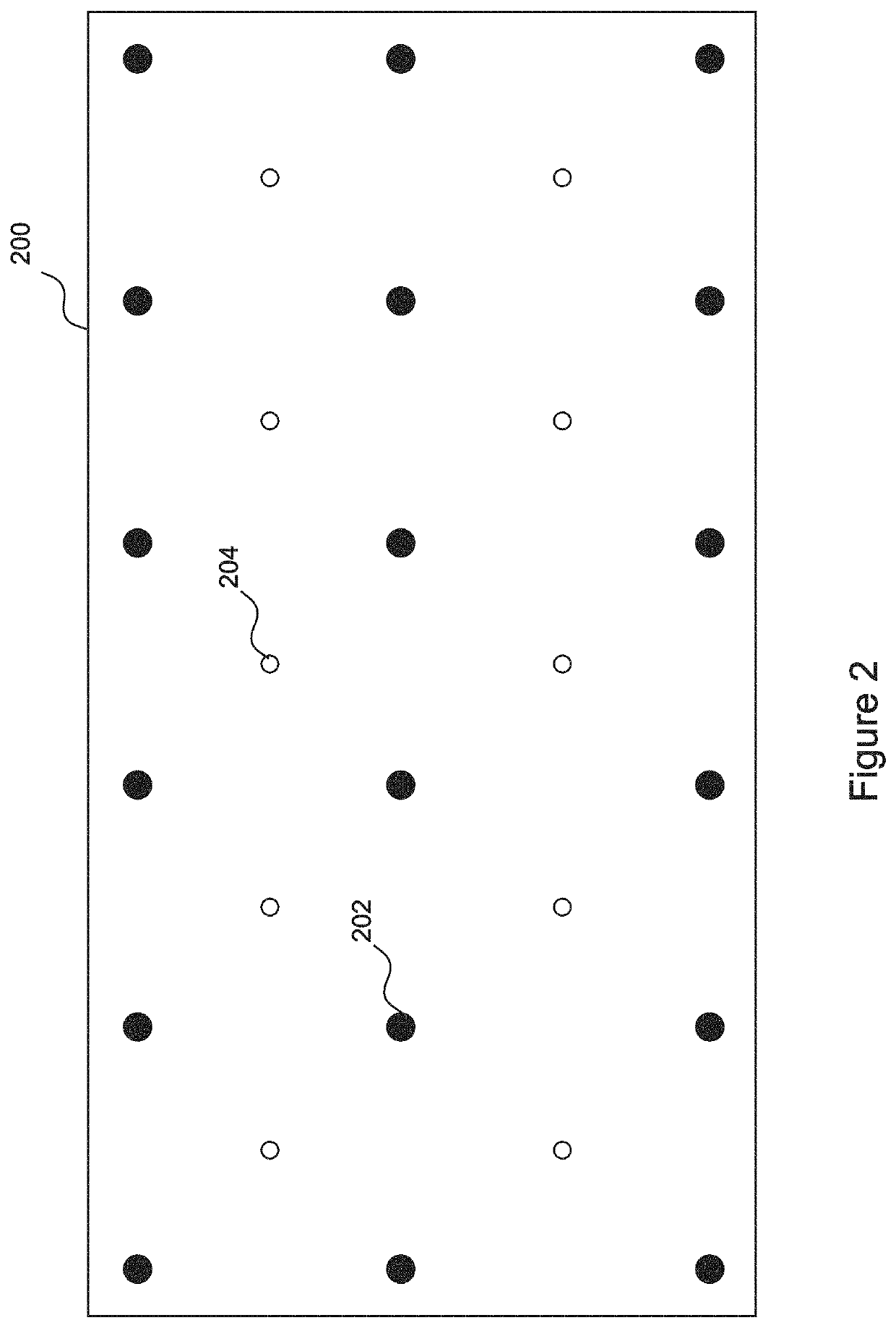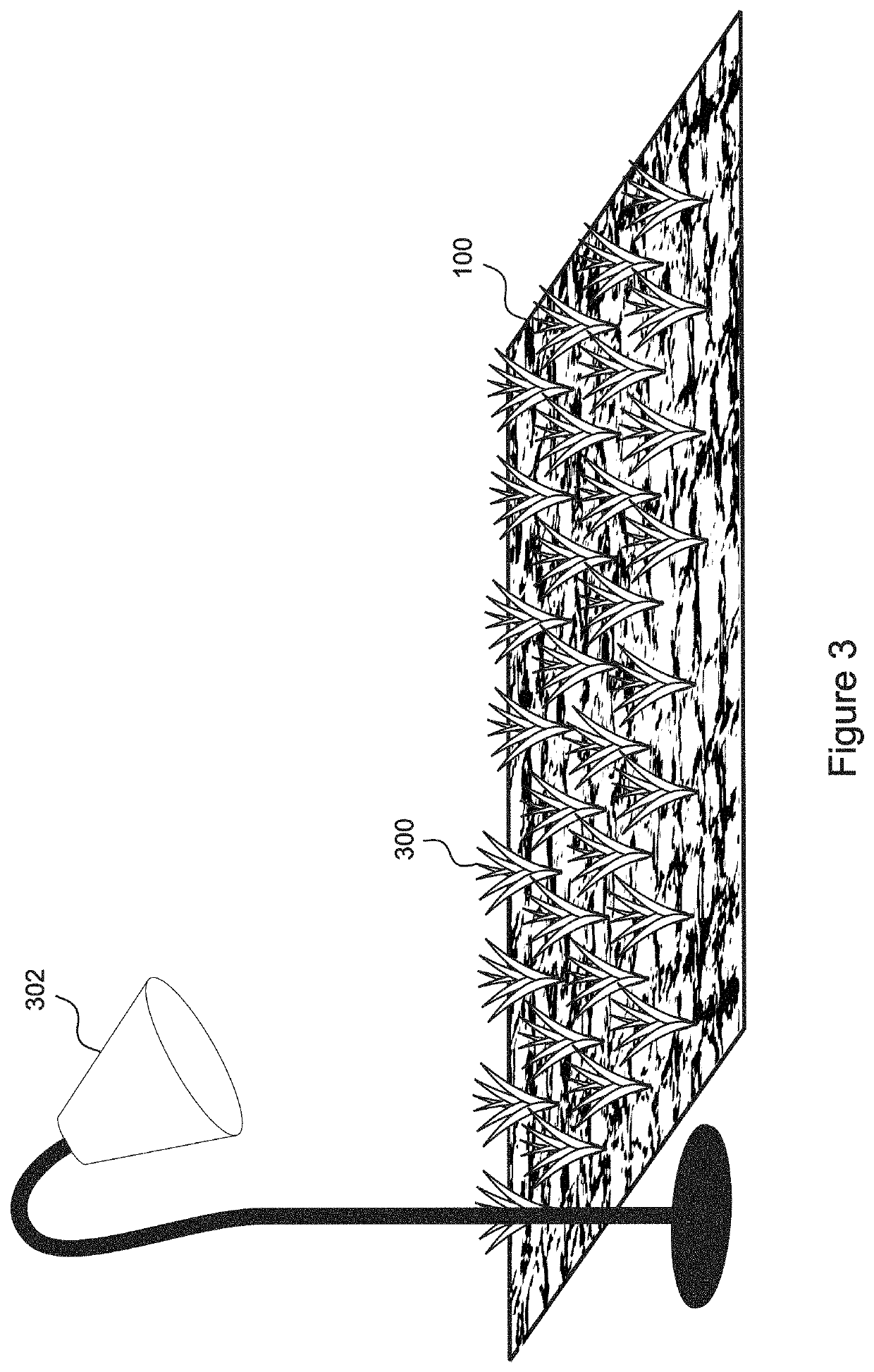Apparatus and method for establishing and growing vegetation in arid environments
a technology of arid environments and apparatus, applied in the field of apparatus and methods for establishing and growing vegetation in arid environments, can solve the problems of increasing the scarcity of water, difficult to survive until, and difficulty in initiating such vegetation, so as to minimize the initial and long-term maintenance requirements, the effect of minimizing the maintenance requirements
- Summary
- Abstract
- Description
- Claims
- Application Information
AI Technical Summary
Benefits of technology
Problems solved by technology
Method used
Image
Examples
Embodiment Construction
[0060]The present invention is an apparatus and method for introducing and growing vegetation in arid environments while minimizing maintenance requirements, including water usage. One general aspect of the invention is an apparatus and method for introducing new vegetation that is compatible with arid environments into an arid location with little or no initial maintenance period, and without introducing permanent, artificial structures into the environment. A second general aspect of the invention is an apparatus and method for cultivating non-arid food plants and / or other vegetation in an arid environment while minimizing both initial and long term maintenance requirements, including water usage.
[0061]With reference to FIG. 1, a mat 100 is prepared and is impregnated with a “super absorbent polymer” or “SAP.” In the first general aspect, the mat 100 is biodegradable, and in some of these embodiments the mat 100 includes coir. In various embodiments of the first general aspect the...
PUM
| Property | Measurement | Unit |
|---|---|---|
| transparent | aaaaa | aaaaa |
| semi-transparent | aaaaa | aaaaa |
| fragility | aaaaa | aaaaa |
Abstract
Description
Claims
Application Information
 Login to View More
Login to View More - R&D
- Intellectual Property
- Life Sciences
- Materials
- Tech Scout
- Unparalleled Data Quality
- Higher Quality Content
- 60% Fewer Hallucinations
Browse by: Latest US Patents, China's latest patents, Technical Efficacy Thesaurus, Application Domain, Technology Topic, Popular Technical Reports.
© 2025 PatSnap. All rights reserved.Legal|Privacy policy|Modern Slavery Act Transparency Statement|Sitemap|About US| Contact US: help@patsnap.com



